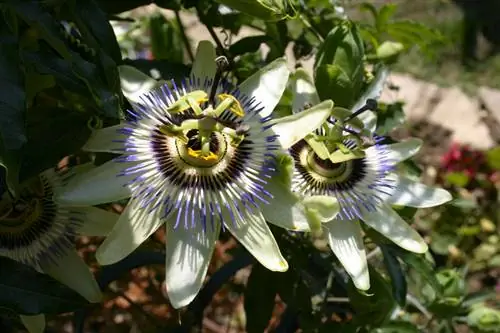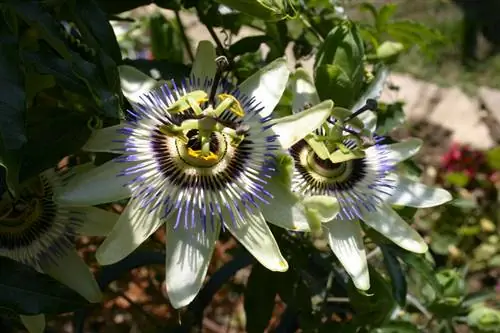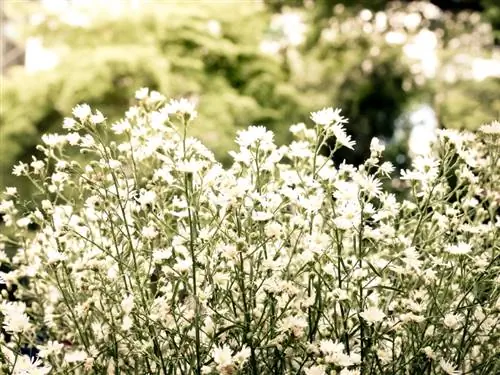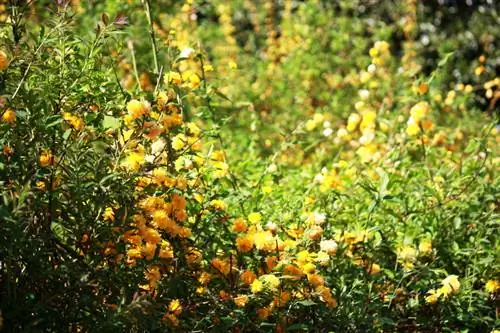- Author admin [email protected].
- Public 2023-12-16 16:46.
- Last modified 2025-01-23 11:20.
The numerous species of passionflower (which also includes the popular passion fruit) originally come from the tropical and subtropical regions of the Neotropics, a region that essentially includes Central and South America. Due to this origin, passiflora needs a lot of sun and the right soil to thrive.

Which location is ideal for passion flowers?
The ideal location for passion flowers is a sunny, warm and sheltered place. The plant requires a lot of space, humus-rich soil mixed with sand and clay powder for optimal nutrient and water supply. The plant is suitable for the garden in summer, but is not hardy.
Perfect conditions: Sunny and sheltered
Surely you also want to cultivate the passion flower because you admire it for its distinctive flowers. So that you can enjoy lush flowers, place the plants in a place that is as sunny, warm and protected as possible, where they can really spread out. Passiflora is a climbing plant and will become stunted over time if it is not given enough space to grow. As a rule of thumb, however, the sunnier and warmer the summer, the more flowers will form. Of course, you can also keep the plant indoors, but then you will necessarily have to limit its growth. Passiflora cultivated indoors usually do not bloom as profusely as a lively climbing specimen on a south-facing house wall.
The real earth
In addition, the passionflower - no matter which type you choose - has a very high need for nutrients and water. So choose a humus-rich soil (commercial potting soil (€10.00 on Amazon) is sufficient) and mix it with a handful or two of sand for more permeability. Optimize the whole thing with a little clay powder and ensure that excess water can always drain off with a layer of expanded clay on the bottom of the pot.
Tips & Tricks
Although the passion flower can be placed in the garden over the summer, it is not winter hardy and should therefore not be left outside over the winter. Leave the plant in a (not too large) container or bury the plant pot in the ground.






